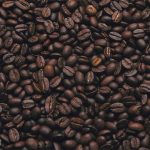 Typical symptoms include restlessness, nervousness, excitement, insomnia, and psychomotor agitation. Accompanying physical signs include flushed face, muscle twitching, and rambling speech.
Typical symptoms include restlessness, nervousness, excitement, insomnia, and psychomotor agitation. Accompanying physical signs include flushed face, muscle twitching, and rambling speech.
A plant alkaloid which acts as a stimulant, found in coffee, cola and tea. It increases pulse rate, accelerates heart action and may cause high blood pressure.
A xanthine (Greek meaning yellow). There are three chief xanthines: (a) caffeine, (b) theophylline, and (c) theobromine.
An alkaloid found in coffee, tea and chocolate, which acts as a stimulant.
A stimulant found in coffee, tea, and carbonated beverages.
A chemical stimulant found in coffee, tea and cola drinks. Initially, caffeine can stimulate mental alertness; however, it may also cause anxiety, irritability and depression.
Stimulant drug found in coffee, tea, cola drinks, chocolate, and cold remedies.
An alkaloid present in coffee. Has diuretic properties as well as stimulatory effects on circulation and respiration. Can also stimulate bowel movements in sensitive people.
Caffeine belongs to a group of lipid-soluble compounds called methylxanthines. Together, caffeine and related substances such as theophylline and theobromine are naturally found in coffee beans, tea leaves, chocolate, cocoa beans, and cola nuts. Depending on the preparation technique, a serving of brewed coffee usually contains between 60 to 150 mg of caffeine, while instant coffee typically has about 60 to 100 mg of caffeine. Teas usually provide around 20 to 70 mg, and soft drinks typically have approximately 35 to 55 mg of caffeine.
Central nervous system stimulant that is an alkaloid derived from the dried leaves of tea plants and the beans of coffee plants, found in coffee, tea, cola drinks, and some medicines. It is used to counter drowsiness and mental fatigue; it also acts as a diuretic. Excessive intake of caffeine frequently causes restlessness, insomnia, and gastrointestinal complaints.
An alkaloid drug, obtained from coffee and tea, that has a stimulant action, particularly on the central nervous system. It is used to promote wakefulness and increase mental activity; it also possesses diuretic properties and will help relieve certain forms of headache. It is often administered with aspirin, codeine, or phenacetin as an analgesic preparation.
A white crystalline substance obtained from coffee. It is a cerebral stimulant, a cardiac stimulant, and one of the diuretics. It is also used in treating apnoeic attacks in premature babies.
An alkaloid present in coffee, chocolate, tea, many cola drinks, cocoa, and some over the counter medicines. The amount of caffeine in beverages varies from 40 to 180 mg in 6 oz (180 ml) of coffee, from 2 to 5 mg in decaffeinated coffee, and from 20 to 110 mg in 5 oz (150 ml) of tea. The caffeine in cola drinks ranges from 30 to 90 mg in a 360-ml (12-oz) serving. The pharmacological action of caffeine includes stimulation of the central nervous system and of gastric acid and pepsin secretion, elevation of free fatty acids in plasma, diuresis, basal metabolic rate increase, total sleep time decrease, and possible blood glucose level increase. Caffeine is considered an ergogenic aid in athletics because it tends to enhance endurance and improves reaction time. Adverse effects include drug dependence and withdrawal in some habitual users.
In healthy, rested people, a dose of 100 milligrams (about one cup of coffee) increases alertness, banishes drowsiness, quickens reaction time, enhances intellectual and muscular effort, increases heart and respiratory rates, and stimulates urinary output. It occurs naturally in coffee, tea, colas, cocoa, and chocolate and is added to some drugs. It is probably the most commonly used drug by adults and children in our society.
Drug that stimulates the central nervous system. Most frequently found in coffee, tea, colas, and chocolate.
A phytochemical that stimulates the body by lowering its neurons’ thresholds of excitability.
This particular element, which appears spontaneously in a plethora of drinks and edibles such as coffee, tea, and chocolate, is an organic compound.
Caffeine is a white crystalline substance that is derived from coffee, and is considered to be the active ingredient in coffee. Although caffeine is most commonly associated with coffee, it can also be found in other sources, such as tea, chocolate, and soft drinks. Caffeine is widely known for its stimulant effects, which can help increase alertness and reduce fatigue. Due to its non-intoxicating nature, caffeine is a popular choice for individuals seeking a quick and easy way to stay focused and energized. However, it is important to note that excessive caffeine consumption can have negative effects on health, and it is recommended to consume caffeine in moderation.
Caffeine is a stimulating substance present in various beverages such as coffee, tea, cocoa, and cola drinks. Known for its stimulant properties, caffeine can help reduce fatigue, enhance concentration, increase heart rate, and induce a diuretic effect, promoting the production of urine. These effects make caffeine a popular choice for individuals seeking increased alertness and temporary performance enhancement.
Excessive consumption of caffeine can result in side effects such as restlessness and tremors. Regular and high intake of caffeine may lead to an increased tolerance, requiring individuals to consume higher amounts to achieve the same stimulant effects. Individuals who consume substantial quantities of caffeine may experience withdrawal symptoms, including headaches and fatigue, when they go without caffeine for a few hours. It is important to be mindful of caffeine intake and its potential effects on the body to maintain a healthy balance.
Caffeine is sometimes incorporated into certain medications, especially in combination with analgesic drugs (painkillers), as well as with ergotamine for preventive treatments of migraines. This inclusion of caffeine in drug preparations aims to enhance the effectiveness of these medications and provide additional relief to individuals experiencing pain or seeking migraine prevention. The presence of caffeine in these formulations can help improve the absorption and efficacy of the drugs.
A substance that exerts a stimulating influence on the nervous system.
